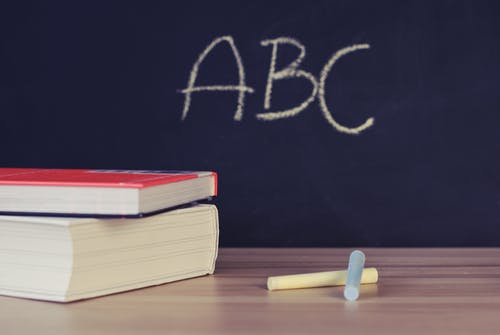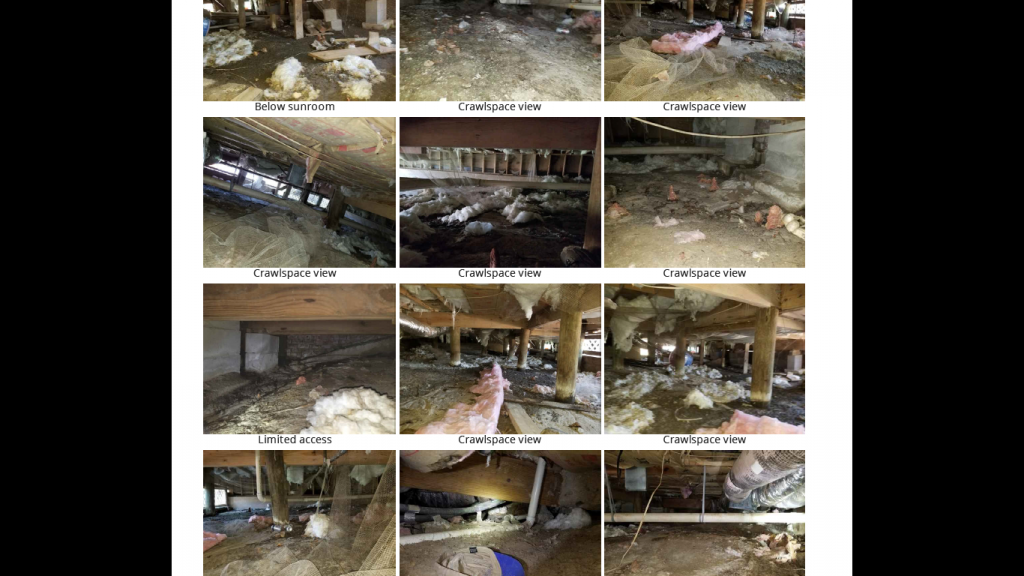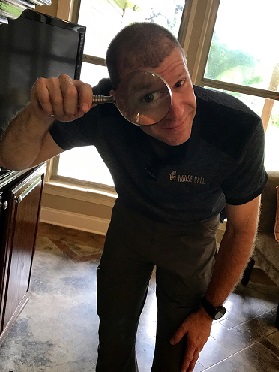When I was younger, I always thought that I was going to grow up to be a professor. I don’t know where that career choice idea originated, but it was there, nonetheless. (I’m still not sure about the part where I grow up, as my wife would certainly debate that idea.) But it seems like my career path was always heading in a different direction, away from college professor and straight towards home inspector. I’m happy about the way it turned out, and surprisingly, it still affords me the opportunity to share my knowledge and experiences with others in my field.

Recently, our school (the American Inspection Academy) held a continuing education class about ways that inspectors can work to reduce problems stemming from their home inspections. The discussion turned to the importance of inspection report pictures. One student’s question was regarding how many pictures an inspector should include in their report.
When the group was polled, as expected, the number of pictures each inspector included in their reports varied greatly. Some inspectors included a minimal number of pictures, while others said that pictures made up most of their report.
There is no magic number of pictures that we should shoot for when we do an inspection, as each inspection is entirely different than the last. However, one thing that I’ve learned during my decades in this business is that the more pictures you have in your report, the better off you are.
Pictures serve many different functions and do them all at little or no cost to the inspector. Here’s a list of the five most easily identifiable benefits of having pictures in your report:
1) Everybody loves looking at pictures.
I’ve come to grips with this reality long ago: most of our clients are not going to read our inspection report. While a professional home inspector may “geek out” about houses and construction, most of our clients don’t share our passion. If the client was that interested in the nuts and bolts of their new home, they would’ve inspected it themselves.
This puts an inspector in a difficult situation, as it’s difficult for us to relay important information to our inspection clients if they’re not going to read the report we produce.
What’s a good way around this problem? You guessed it, pictures. While most people don’t want to read a report, they’re more than happy to look at the pictures. Even though we may not be able relay the same amount of information with a picture, at least some of the information is getting through, and it may even spur enough curiosity in our client for them to read a bit of their report, just to see why we included a picture of that strange pipe-looking thing sticking out the wall.
A good example of this is including a picture of the drain termination points of the TPR valve and any overflow drain pans. While this information is not something that our standards require us to report on, by letting the pictures tell a story about the client’s new house, we may be able to get them to understand what it is we’re trying to do: teach them about their home.
2) Pictures don’t lie.
One of the bad things about being a home inspector is having to deal with unrealistic expectations. Most of our clients have no idea what we do and don’t understand the nature of the service we provide. They’re under the impression that we can see through walls, defy gravity and predict the future.
I don’t know about you, but my home inspection doesn’t include any of those features. (Well, at least not the gold level package, but if you upgrade to my new platinum level service…)
Problems are an unavoidable part of being an inspector. Clients will discover things that we didn’t include in our report, particularly when we’ve inspected a furnished home. Things will eventually break in every home, and sometimes it happens the first time a new homeowner tries to operate it.
Without a picture to document how much stuff was in the house at the time of the inspection, or to prove that you really did open that electric panel, it comes down to your word against theirs. And being in a “he said, she said” court battle is not a good place to be.
I take pictures to show what I’ve done and what the house looked like at the time of the inspection. These pictures help to cover my butt when there’s a problem.
A good example of this is taking pictures of the cover as well as the interior of an electric panel. It proves that yes, I did inspect the inside of that panel. Make it easier to defend yourself when those inevitable problems occur: if you inspect it, take a picture of it.
3) Pictures can make your life easier.
Phone calls and follow-up questions are all part of the territory. If we’re providing a service for our clients, we must expect that they’re going to have some questions. They paid for access to our knowledge, experience and opinion; they trust what it is we have to say about their home. It’s only natural that we would be one of the first people they turn to when new questions arise.
What size did you say my AC filter was?
Where is that water shut-off valve you told me about?
Where is my breaker panel again?
While I certainly don’t mind answering questions and helping my clients, once they’re in their house, their deal is done. The more time I spend talking on the phone, answering simple questions, the less time I have to figure our how to make money and grow my business. I make money when I’m doing inspections, not sitting on the phone explaining what a breaker looks like.
I include informational pictures, explaining what something is, where it’s located and how it works. By using the report to point out these basic items, I can (hopefully) reduce the number of phone calls I get after the inspection.
A good example of this is using pictures of the main water, gas and electrical disconnects. Highlighting the device (using your software to draw a circle or square around the item) and using easy to understand captions can eliminate some of those future phone calls.
4) Picture are good marketing.
Every businessperson wants to have a successful marketing program. Without effective marketing, it’s hard to increase your client base. And one of the most effective marketing tools that inspectors possess is often not even something that we consider to be one: our inspection report.
Even though most inspectors despise the idea, our reports are often passed around among many different parties. As a result, many people (besides our original client) end up looking at our report. The better our report looks, the more likely someone else is to take notice of who we are and what we do. Which increases the possibility that we may end up on someone’s “short list” of preferred inspectors.
Pictures not only make our report look better, but they make it easier to use. If an agent can simply refer a contractor to a picture, instead of having to pick up the phone and call us to ask about our recommendation, that agent is going to be much happier. Just like you would rather be inspecting than answering client’s questions on the phone, that agent would rather be selling than calling you to find out what you’re talking about on page 27…
Pictures also make a report easier to understand for our clients. A home can be a complicated thing, and oftentimes our inspection reports can become muddled with technical jargon that can easily go over the head of our clients.
When a client feels like they’re too dumb to understand what they just paid for, it’s a recipe for an unhappy customer. Happy clients leave good reviews and recommend us to their friends and relatives. Unhappy ones, not so much.
Taking pictures of those exposed wire splices in the attic, with enough of the surrounding area visible so they can be easily located, is easy to do. Well-framed pictures can mean the different between a problem getting fixed quickly and easily or an inspector fielding phone calls from buyers, sellers, agents and contractors weeks after the inspection asking where those exposed wires are located.
An easy repair process makes for happy clients and agents. Happy clients and agents give good review, and good reviews are great marketing. Accomplish this easily with pictures. Why not take advantage of this no-cost advertisement opportunity?
5) Pictures save time.
Doing a good home inspection takes time, and time is money. It’s always a good thing to work on a big inspection for three hours, making big inspection money. However, the more time we spend at that house, the less time we have for other things, like figuring out how to get more home inspections.
Pictures can reduce the amount of time we spend onsite, which can help us in many ways. If you’re working in a territory where the real estate agents come to the inspection, spending less time at the house is a great way to make them happy. From an agent’s standpoint, nothing good can ever come from a longer home inspection, so the less time they spend sitting around waiting for you to finish, the better.
Instead of spending 30 minutes in the attic, documenting our inspection findings in our reporting software (and sweating our butts off), we can spend 10 minutes in the attic, inspecting and taking pictures of our findings. We can easily recall our inspection highlights later, from the air-conditioned comfort of our couch, using the pictures to guide us in filling out our inspection information. Thirty minutes on the couch beats 30 minutes in the attic any day…

Pictures are an invaluable tool in our home inspection belt. They help our clients by making our reports easier to understand. They help our agents by speeding up the process and simplifying their job. They help us by making our reports look and work better and make our inspection move along more quickly. And they help everyone involved by documenting exactly what went on at the time of the inspection.
All this for the low, low price of, free!
Take more pictures. It really is a no-brainer.
Would you like to get an email every Friday where we share the newest things we’ve discovered about home inspections? CLICK HERE to sign up.
Want to be an Influencer in Your Field? Share This Post!
Thanks, Joe


